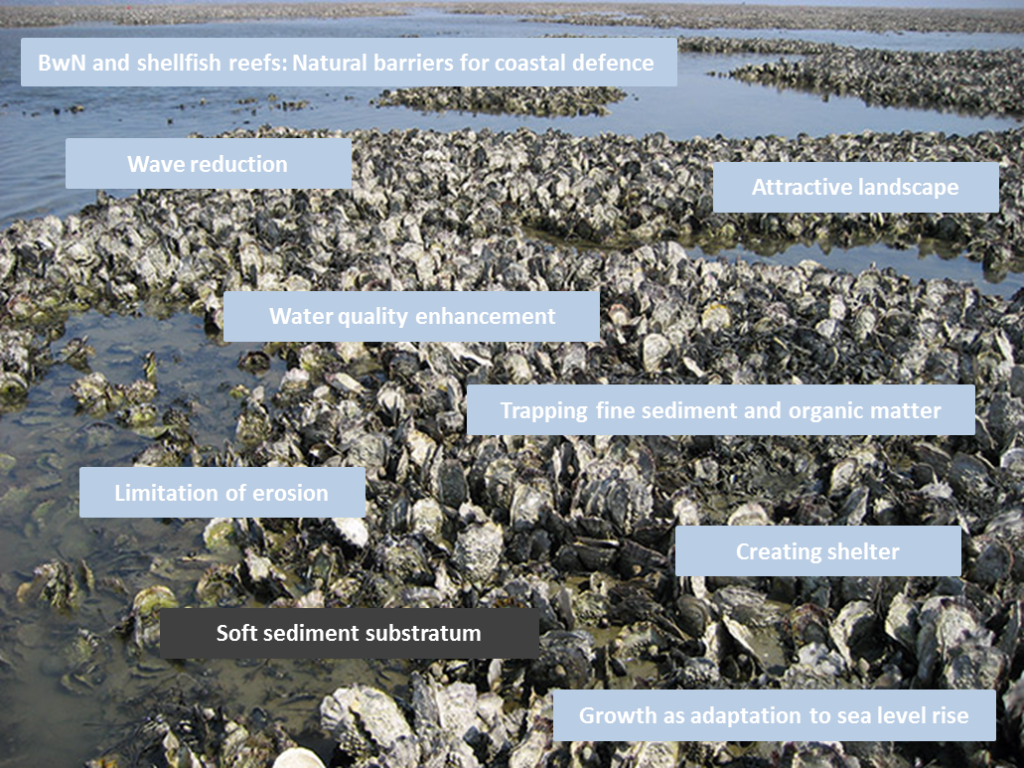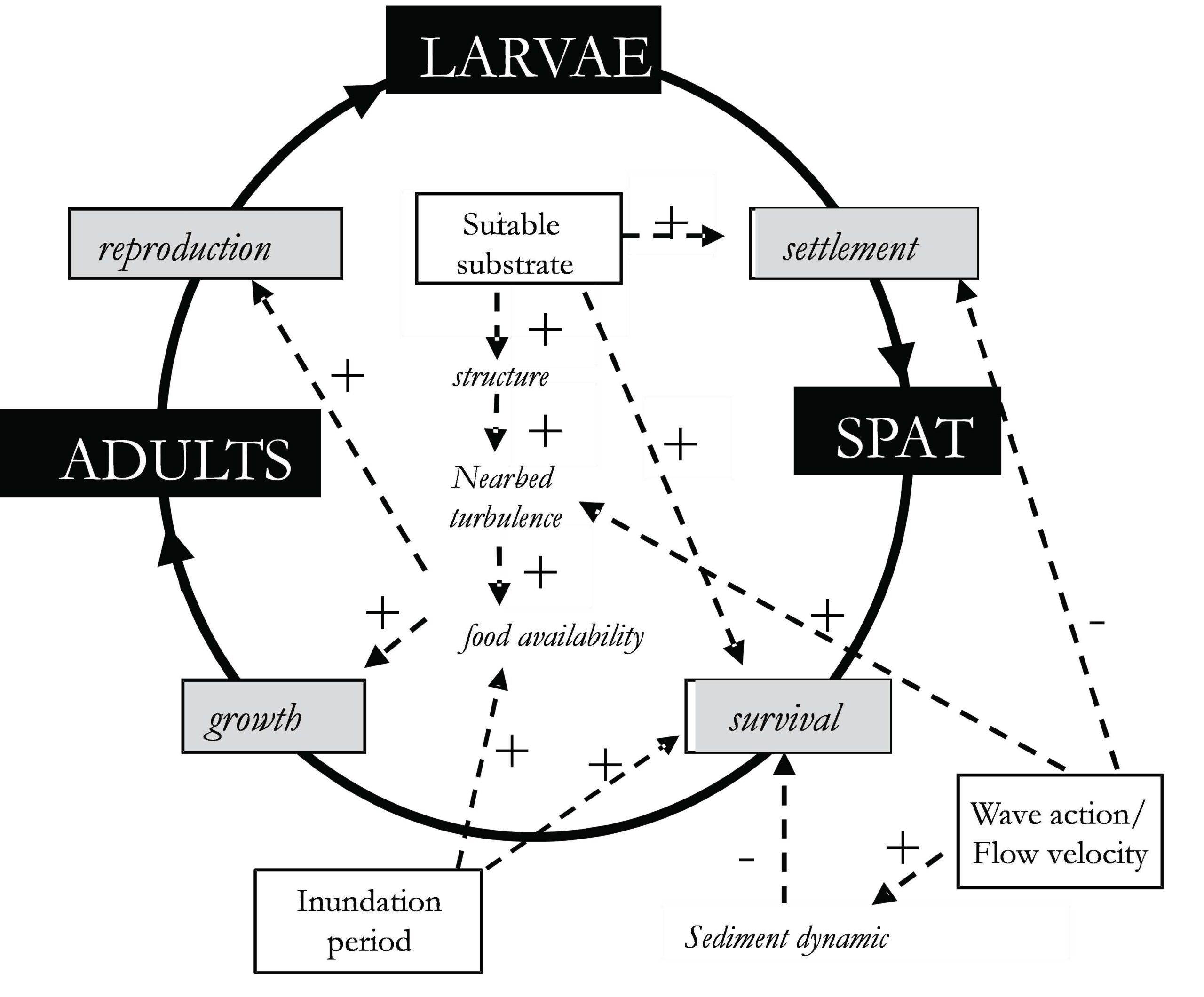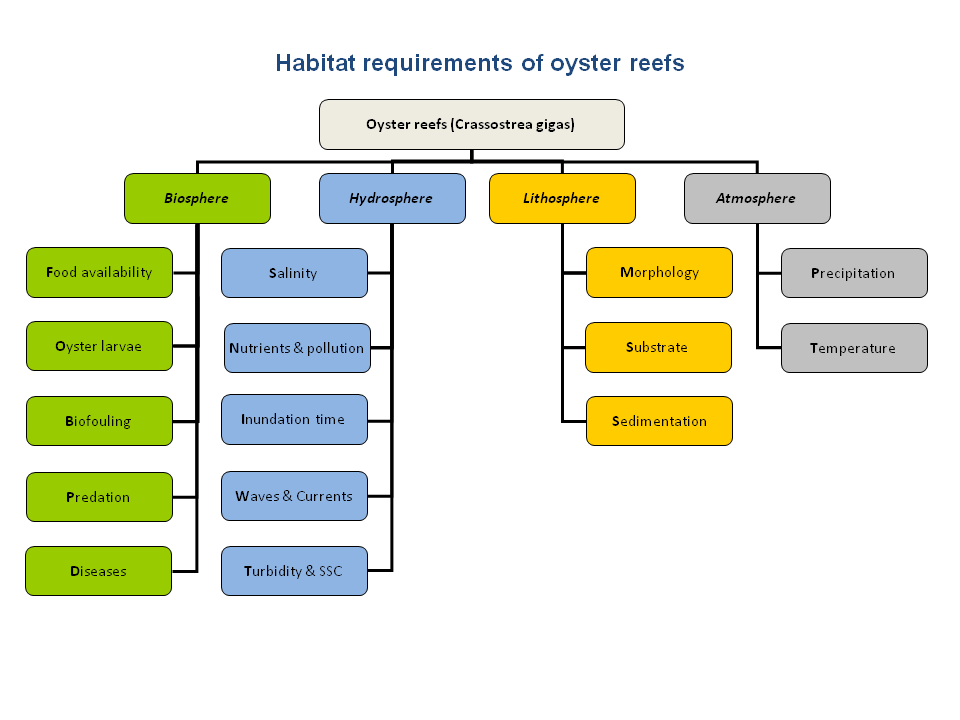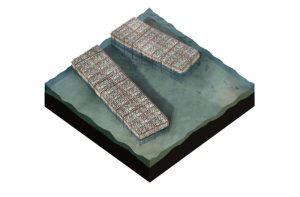Get Started
This Concept focuses on the creation of shellfish (bivalve) reefs that change the near-bed flow and dissipate wave energy on intertidal flats, thereby influencing sediment transport, erosion and deposition. It describes the habitat requirements for shellfish reefs in soft sediment habitats, based on experience with the Pacific Oyster. The advantage of oysters compared to other shellfish such as mussels is that, due to its strong ‘cement-like’ coagulation, they stay attached to the substrate after dying and are therefore capable of forming stable and sustainable reefs. This guideline can be used to check whether a certain location is suitable or can be made suitable for the establishment of oyster reefs.
Required skills
This guideline can be used as a first-order assessment of the habitat requirements of reef forming bivalves, more specifically the Pacific Oyster. To fully assess the suitability for shellfish reefs one should have a thorough knowledge about the area of interest, as well as additional ecological expertise on the shellfish species considered and its ecosystem engineering capacity under different environmental conditions. Local hydrographic, sedimentologic, water quality and nutrient availability conditions, as well as historical data on reef occurrence and success, must be taken into account while selecting sites and developing restoration strategies.
BwN Interest
The added value of this tool within BwN-type projects is that it enables the creation of natural coastal barriers with reef-building ecosystem engineers. Ecosystem engineers are species that modify their own environment, to their own benefit and that of other species. Thus they can be key species in the formation and persistence of structurally complex habitats. Such habitats can be used to combine the intended function, for example, coastal protection and/or associated economic and social returns with habitat restoration/conservation, for example by enhancing biodiversity.
This Concept focuses on experiences using the Pacific Oyster (Crassostrea gigas) in temperate soft sediment habitats. Worldwide, the Pacific Oyster is one of the most widely cultured shellfish species. The preconditions for the use of – preferably indigenous- reef-forming oyster species in new habitats are best tested in the habitat concerned. This will help creating successful reefs (Mann and Powell, 2007).

Advantages
- Decreases shore erosion by dissipating wave-energy.
- Traps fine sediment and organic matter
- Provides a sustainable barrier hampering sediment transport from a protected area into the adjacent channels
- Can enhance biodiversity
- Provides shelter for other species
- Water quality improvement through filtering nutrients and contaminants
- Can keep up with a (certain) rate of relative sea level rise by sediment trapping.
Disadvantages
- Shellfish reefs only occur in temperate environments
- Contamination hampers shellfish establishment and growth
- Species that make up the shellfish reef can be an invasive species
- Can result in a shift of the benthic population
- Present (eco)system can be degraded
Habitat requirements for oyster reefs

Different oyster species have different habitat requirements. Temperate intertidal soft-sediment habitats are ideal for the Pacific Oyster, but other environmental characteristics may form bottlenecks for its survival.
The circular flowchart shows the complex interactions between the lifecycle of an oyster and the (a)biotic environmental conditions that determine the development of a natural oyster reef. The abiotic environmental conditions (white blocks: suitable substrate, wave action/flow velocity and inundation period) affect oyster performance (grey blocks: settlement, growth, survival, and reproduction) in different life stages (black blocks: larvae, spat and adults).
This Concept describes the critical habitat requirements for these oysters based on the 4 spheres approach, stating that all four spheres (biosphere, hydrosphere, lithosphere and atmosphere) interact with each other and cannot be considered on their own. The biosphere includes all living organisms, the hydrosphere relates to water in or near the earth, the lithosphere includes all solid materials, soils and rocks, and the atmosphere relates to the weather and climate. For each of these spheres the relevant parameters are described, including the critical conditions for oyster reef establishment. These values are derived from Building with Nature studies and literature. Based on these conditions a certain location may be (made) suitable for oysters.

A complete overview of the four spheres and the relevant parameters regarding oysters in these spheres is shown in the habitat requirement tree below. The background of all the parameters, including the limitations to each parameter can be found below.
For more detailed information on the spheres, given in the image above, click the links below.

